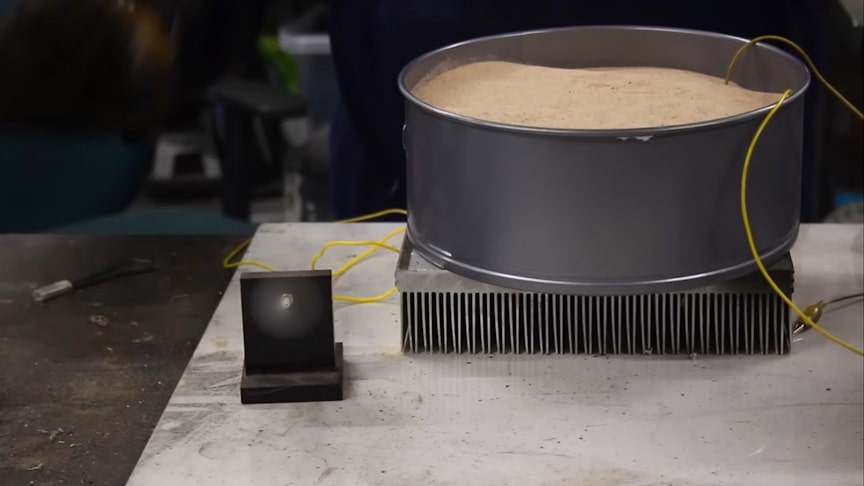A sand battery is a high temperature thermal energy storage that uses sand or sand-like materials as its storage medium. It stores energy in sand as heat. Storing energy can be done in many ways, with the chemical storage method of a battery being one of the most common. Another option is a thermal battery, which basically means making something hot, and later extracting that heat again.
source.image: Robert Murray-Smith
These high temperature thermal energy storages use sand, a material that can hold its temperature for months.The process involves the use of insulated steel silos filled with sand and heat transfer pipes. Watch the video from Robert Murray-Smith where he explaines the basic concept of a thermal battery that uses sand is demonstrated.
The concept of a sand battery is similar to using geothermal cooling putting fluid conduit, including liquid or gas in the ground but in this case, it’s using sand instead of Earth.By running a current through a resistive wire that’s been buried inside a container with sand, the sand is heated up to about 200 °C. As Robert points out, the maximum temperature of the sand can be a 1000 °C or more. Because sand doesn’t boil like water, the amount of energy stored in sand is correspondingly higher.
Advertisement
Extracting the thermal energy can be done rather inefficiently using the demonstrated Peltier element. A Stirling engine, or steam generator and turbine, would get a lot more energy out. Either way, the thermal battery itself is made using just plain sand, which makes it an attractive DIY target to tinker with.The sand can hold onto the power for weeks or months at a time — a clear advantage over the lithium ion battery, the giant of today’s battery market, which usually can hold energy for only a number of hours.











